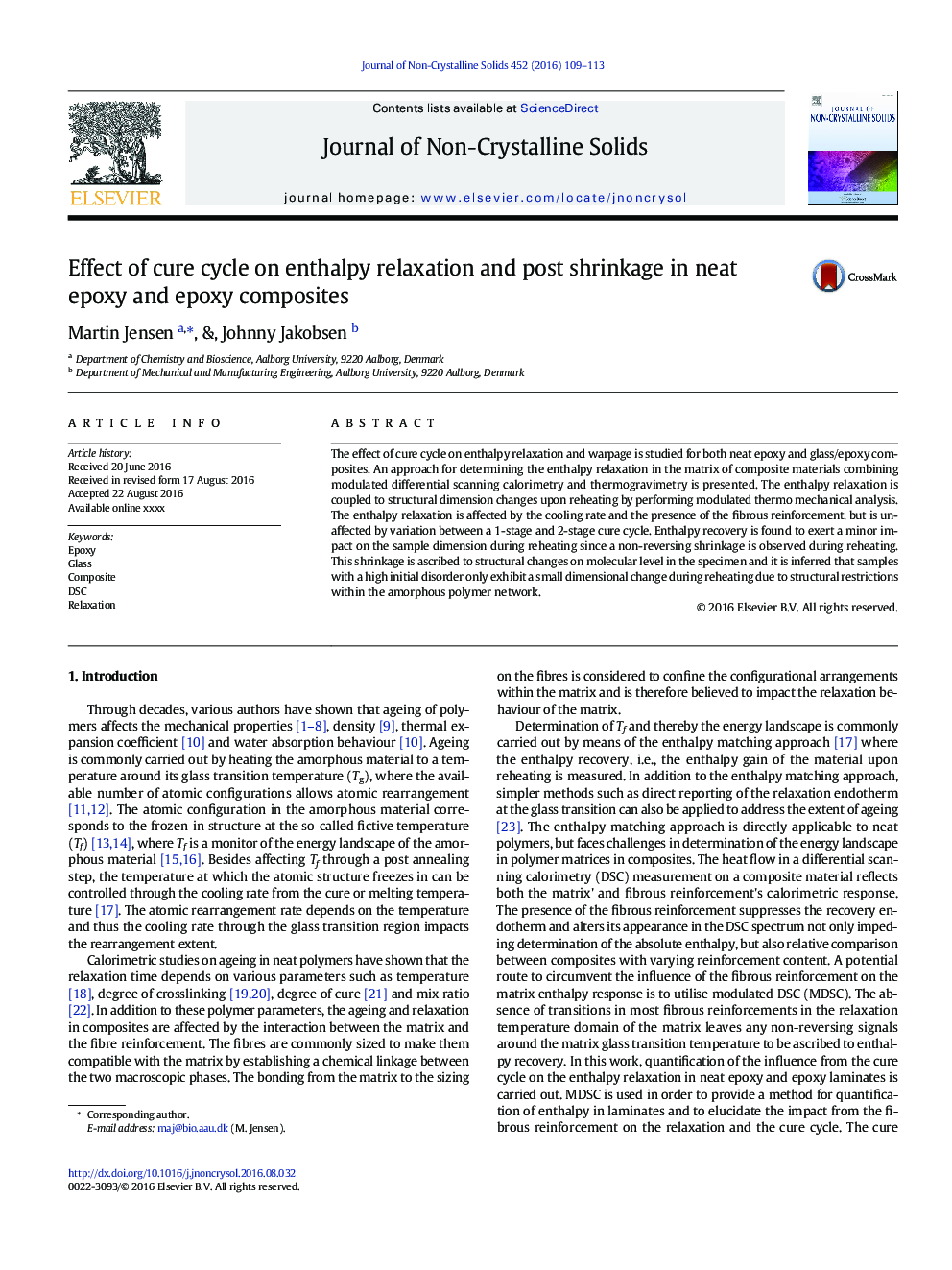| Article ID | Journal | Published Year | Pages | File Type |
|---|---|---|---|---|
| 1480095 | Journal of Non-Crystalline Solids | 2016 | 5 Pages |
•Enthalpy relaxation depends on cooling rate and reinforcement content.•Enthalpy relaxation is independent of the gelation temperature.•Shrinkage upon reheating due to stress release that counteracts enthalpy recovery.•Relaxed matrices shrink more during reheating than abruptly cooled samples.
The effect of cure cycle on enthalpy relaxation and warpage is studied for both neat epoxy and glass/epoxy composites. An approach for determining the enthalpy relaxation in the matrix of composite materials combining modulated differential scanning calorimetry and thermogravimetry is presented. The enthalpy relaxation is coupled to structural dimension changes upon reheating by performing modulated thermo mechanical analysis. The enthalpy relaxation is affected by the cooling rate and the presence of the fibrous reinforcement, but is unaffected by variation between a 1-stage and 2-stage cure cycle. Enthalpy recovery is found to exert a minor impact on the sample dimension during reheating since a non-reversing shrinkage is observed during reheating. This shrinkage is ascribed to structural changes on molecular level in the specimen and it is inferred that samples with a high initial disorder only exhibit a small dimensional change during reheating due to structural restrictions within the amorphous polymer network.
